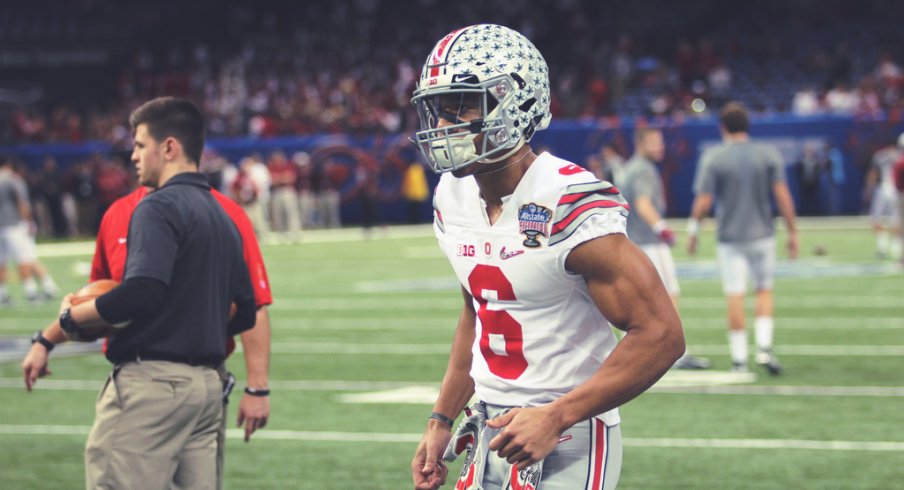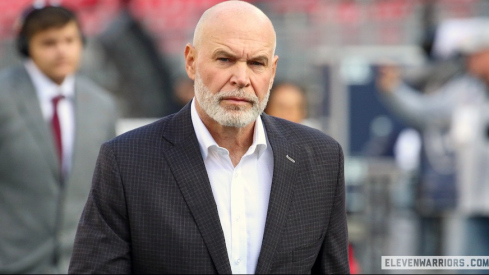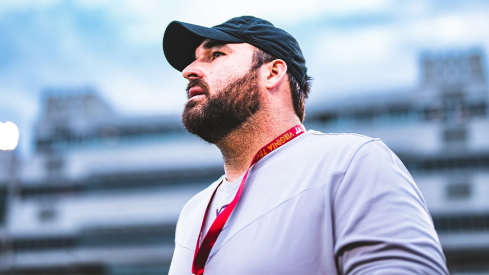It is just a GAME, after all.
At some point in all of our lives, we were told that football was supposed to be fun. However, with the massive appeal and ever-growing pressure to win at every stage, that fact can easily be lost.
Perhaps with no group of people is that more true than coaches, although it's hard to blame them. Coaches at the professional, collegiate, and (increasingly) high school levels stay employed by winning, a focus that often eliminates the concept of 'fun' entirely.
Occasionally however, coaches can find ways to incorporate new elements into their playbooks that are fun for both players and fans alike.
Last fall, we saw the emergence of a new trend, as 'playing dead' was introduced by Arkansas State, for reasons that are still yet to be determined. Although that incarnation may not have had the results they were looking for, it inspired a very good TCU team to incorporate the idea into a kick return against Oklahoma, resulting in a fifty-yard return before getting called back for holding.
But as seems to often be the case, with the extra time afforded this group during the additional 15 practices for bowl-bound teams, a few coaches took the time to incorporate some fun into their game plans last December in advance of bowl season. Let's examine how they were able to pull them off on some of college football's biggest stages.
Another Ohio State QB?
Though they were lining up their third-string quarterback by the time the College Footbal Playoff began, Ohio State's offense was perhaps more dangerous than any in school history, shattering records in every direction. Against Nick Saban's vaunted Alabama defense though, they'd need to pull out all the stops in order to advance to the national championship.
Buckeye coach Urban Meyer has long believed in the constraint theory of offense, looking to build plays off one another by all appearing to be the same at first before incorporating some kind of misdirection. Sometime that misdirection is a simple counter play, sometimes it has been a 250 lb quarterback throwing a 1930's era jump pass.
On this night in New Orleans, his offense would run a number of Jet Sweeps, looking to get speedy receiver Jalin Marshall the ball quickly around the edge of the defense with a host of lead blockers. Inside the red zone with less than 20 seconds remaining though, Meyer called for a slight wrinkle: this time, oft-overlooked wide receiver Evan Spencer would come back across the play taking a lateral from Marshall on an apparent reverse.
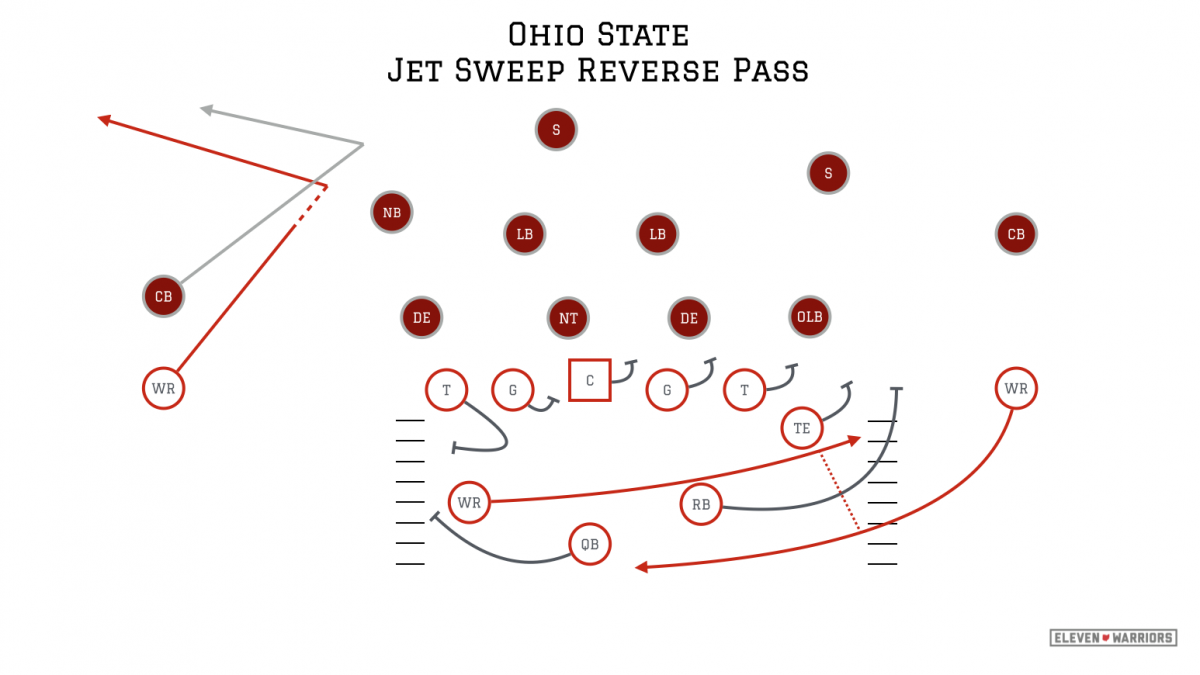
The entire offensive line appears to be executing the typical lateral steps seen on the Jet Sweep, but is actually setting up a 'slide' pass blocking protection, as none of the players release downfield. Meanwhile, opposite wide receiver Mike Thomas releases inside and eventually slows down as he would if he were trying to wall off his defender on a block downfield for the Jet Sweep.

But before Spencer turns the corner, he sets up in the pocket created by nine players, including quarterback Cardale Jones, and fires a perfect strike to Thomas, his only receiver on the play. Thomas had broken quickly to the outside with a textbook swim move, grabbing the outside shoulder of the defender with his left hand before swinging his right over top to release.
As we all know, of course, Thomas' biggest contribution to the play would come when the ball arrived, as although Spencer put it in the only place he could get it over the defender's outstretched arms, many still wonder how #3 was able to get his left foot down inbounds.

Lady Liberty in the desert
Many of us remember Boise State's Stefon-like entrance into the college football mainstream as the upset the heavily favored Oklahoma Sooners in the 2007 Fiesta Bowl. That game had everything: a hooks, ladders, halfback passes, marriage proposals, and of course, the Statue of Liberty.
Fast forward eight years, and the Broncos were back in Glendale, this time to take on the Arizona Wildcats. Former Bronco QB and coach Bryan Harsin returned to Boise to take over as head coach last fall after a stint running the offense for the Texas Longhorns. It should've come as no shock then that the man who helped design that initial Fiesta Bowl game plan would look to many of those trick plays once again.
None was more famous than the statue-of-liberty play that sealed the victory in '07, as running back Ian Johnson took a delayed handoff from QB Jared Zabransky, before racing around the edge to score the winning two-point conversion. The play would gain national attention, as Johnson, after being mobbed by teammates and media members, would use his on-field, post game interview to propose to his girlfriend, a Boise State cheerleader standing nearby.
Though this year's game would be another shootout, Harsin wouldn't wait until the game's final play this time to bring out his program's most famous play.

Running an offense very similar to Ohio State's 'Power Spread,' the Broncos often looked to get the ball in the hands of the play makers in space, using many of the same tactics as the Buckeyes. One such concept is the flare screen, which sends a back out of the backfield, often to the wide side of the field on a lateral route behind a host of blockers.
After blowing the doors off the Wildcat defense on the preceding two drives, the Broncos once again were inside the Arizona red zone late in the first quarter. After picking up a first down and quickly getting to the line, Boise appears to be setting up the flare, even sending the back in motion just before the snap to call attention to it.
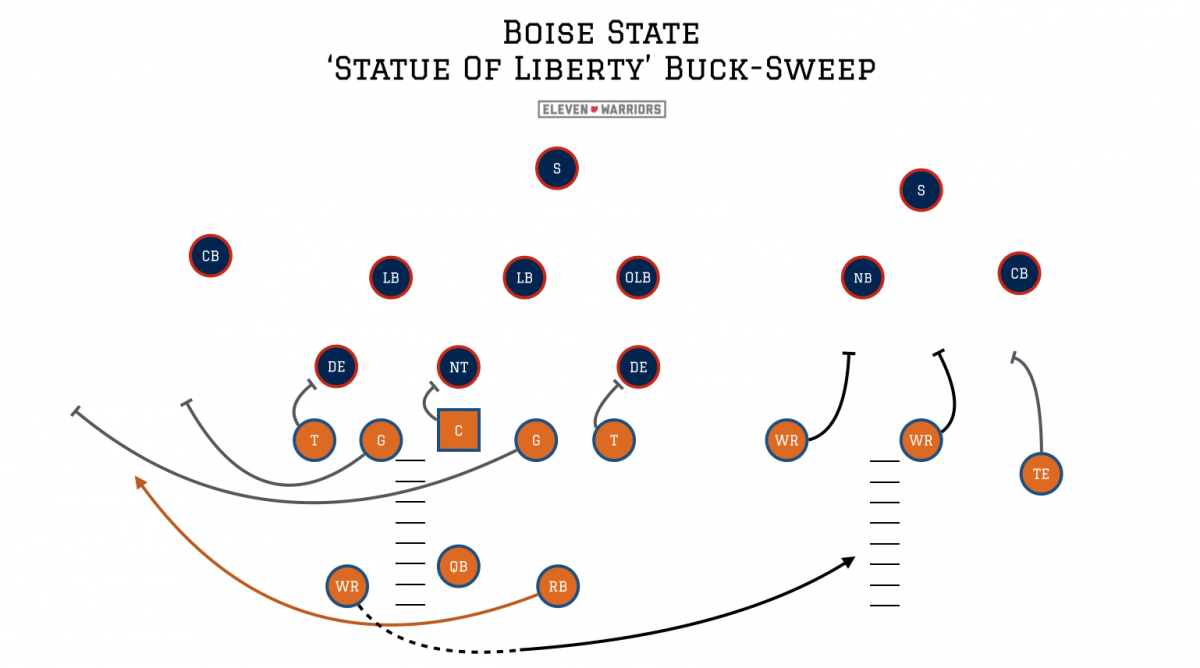
To execute this iteration of the play, it simply requires the offense to be broken down into three groups:
- Receivers: The split out receivers simply act as if they're blocking for the flare screen behind them
- Offensive Line: Block a basic Buck Sweep, with both guards pulling to the left while the remaining linemen use a lateral 'reach' step to seal off the D-line
- Backfield: Along with the aforementioned motion from the receiver, the quarterback and running back perform an intricate dance in which the back ducks down to get out of the way of a pass that never gets thrown, before taking the ball out of the quarterback's left hand

Both the flare and buck sweep were already in the Broncos' playbook, so the only part that needed additional practice was the quarterback-running back exchange. It should be noted, however, that any team looking to run such a play looks much smarter when they have a back that can run through three arm-tackles on the same play.
#FatGuyTD
With all the things that divide college football fans, every now and then it's nice to celebrate the things that bring us together. Perhaps nothing does so more than watching a 300 lb man that has dedicated his life to literally pushing other 300 lb men around, get to actually touch the ball and score points.
Though we're often treated to one or two of these scenes each week when we turn on College Football Final, it's often a defensive player returning a fumble or fluke interception that finds the end zone. However, with the bastions of adoring fans making their feelings for fat guy touchdowns known on Twitter each time, coaches have begun to take notice.
Though often vilified on this very site, Arkansas coach Bret Beilema could have perhaps won the award for most original use of a 300+ lb player last fall. After sending the kicking team out on a fourth down for what looked like an easy field goal, Bielema called on lineman Sebastian Tretola to take the snap before throwing a touchdown pass to the long snapper in their matchup with UAB.
But calling for a special teams trick play against a non-power-5 school is very different than doing so against the top-ten defense of Michigan State in your bowl game. Baylor did just that with perhaps the biggest of big-man touchdowns ever.

390-lb backup guard LaQuan McGowan seemed to come from nowhere when he caught a wide open pop pass before rumbling ten yards in the end zone in last January's Cotton Bowl, giving the Bears a 41-21 lead that would eventually disappear (insert requisite #B1G chest-thumping HERE).
Though the image of McGowan celebrating while barely wearing a jersey designed for a man half his size is now a poster image for his program (ironically sharing that stage with a man completely his opposite in appearance), it's a wonder how the Bears were able to hide him on the play.
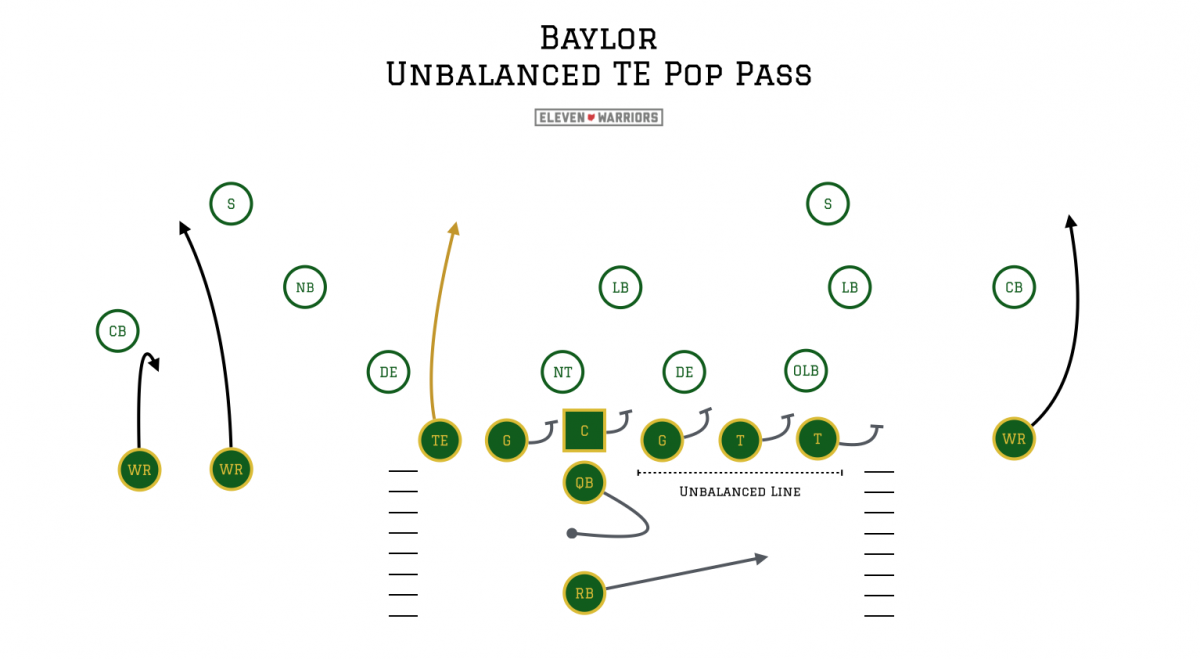
Very often, when linemen catch a pass, they've done so while wearing their normal uniform, which often carries an ineligible number (between 50-79). These players must check with a referee before the snap to declare that they are eligible receivers for that play, which the official then announces to the opposing team.
On this occasion though, McGowan didn't need to check in, as he was wearing the eligible #80. To the Spartan defense, however, he appeared to be lining up in a fairly normal position for a man his size, as the left tackle. The normal left tackle was lined up on the right though, creating an unbalanced look behind which the Bears looked to be running an outside zone play after the snap.
With two receivers split far to the left, and an over-loaded offensive line to the right, the MSU defense completely empty over McGowan, creating a perfect seam through which he immediately (for him) released upfield. Quarterback Bryce Petty took one hard step toward the run action before firing a quick pop pass to the biggest tight end of all time, as the Spartans were left perfectly vulnerable.

Word out of Baylor spring practice was that McGowan was continuing to practice at tight end, hoping to extend his time in the spotlight. Although he's probably never going to hide as well as he did that day against the Spartans, I certainly hope he continues to try.
